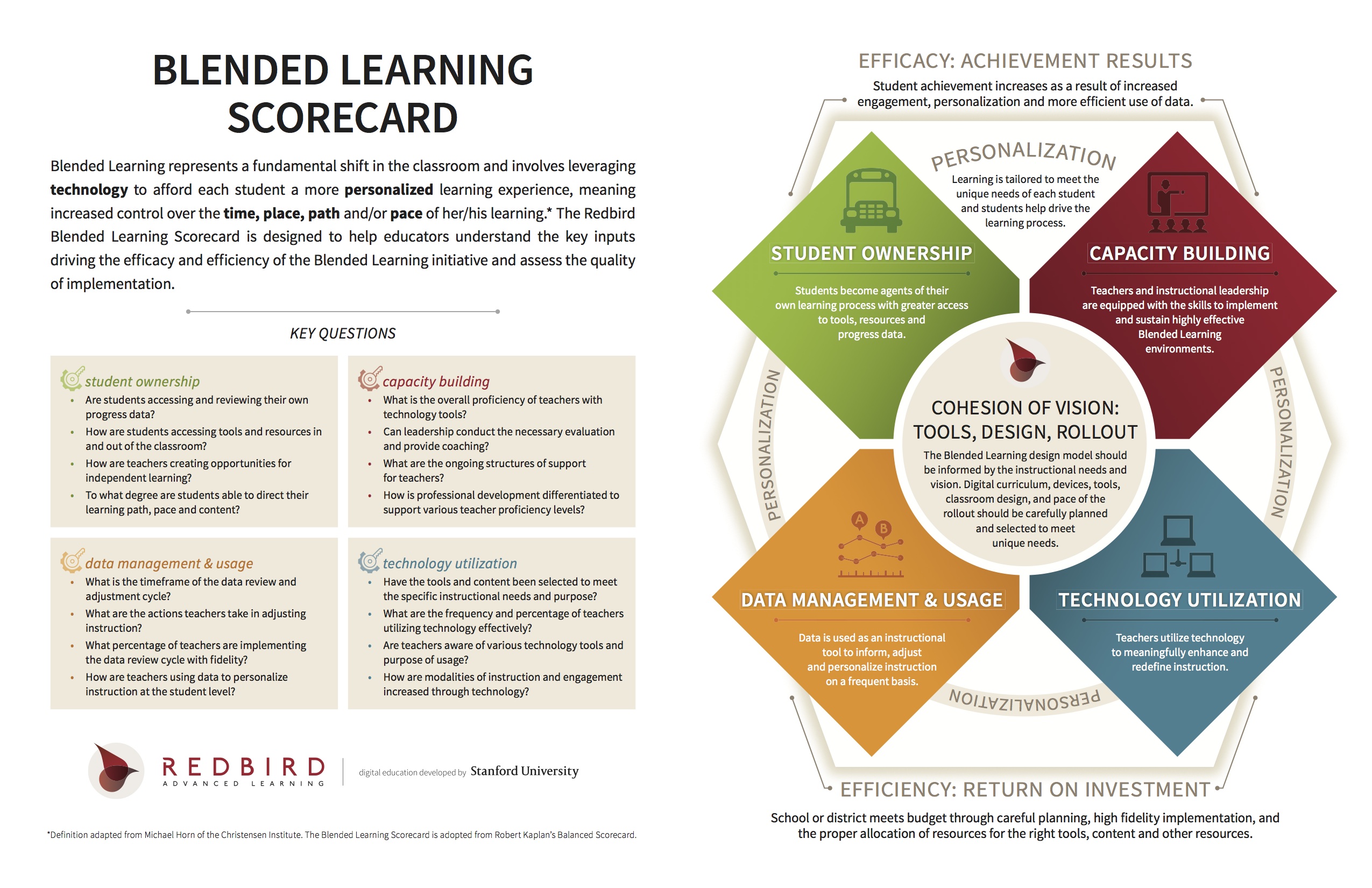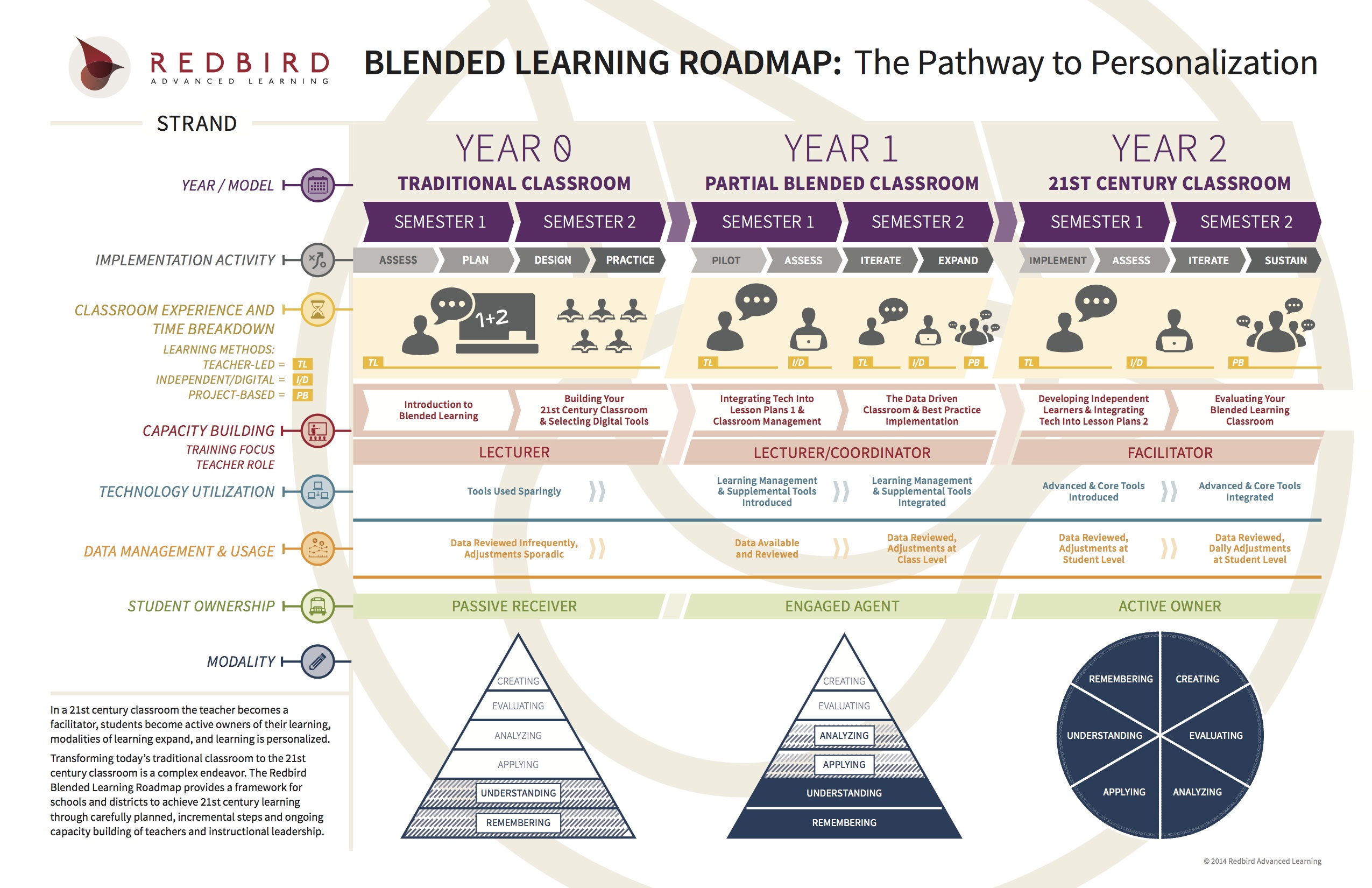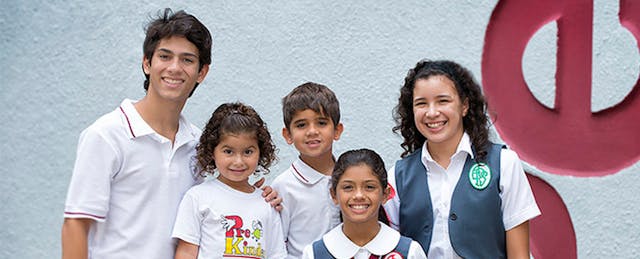Puerto Rico is a commonwealth of the United States which during the second half of the 20th century experienced one of the most impressive economic growths in the world. Today, the island is working on developing the foundations for a new economic surge in a global landscape different from the one it had in the past. In order to successfully accomplish this, Puerto Rico is working on overhauling its education system so that it can develop 21st century professionals ready to compete in the information economy.
This is the story of how one traditional school with a long reputation of academic excellence had the vision of implementing a comprehensive, long-term blended learning project, and how this example could spearhead the transformation of many other Puerto Rican schools--potentially in the third biggest public school district in the country.
Backstory
For the last 93 years, Academia del Perpetuo Socorro (APS) in Miramar, an urban community in the heart of San Juan, has served as one of the top educational schools in Puerto Rico. In 2012, its students ranked sixth in math on the College Board, Puerto Rico’s college admissions test, out of almost 600 high schools on the island.
Throughout the school’s history, the teachers of Perpetuo have cultivated some of the island’s most esteemed leaders, thinkers and influencers, including scientists, engineers, doctors, lawyers, politicians, artists, and teachers, including actor Benicio del Toro, Acompli CEO and co-founder Javier Soltero, writer Magali García Ramis and more.
This academic institution has always sought the most innovative and researched pedagogical methodologies, but this year, it decided to more aggressively pursue next generation practices. Cognizant of the advances in the digitalization of education, the school knew that it needed to innovate in order to continue its legacy of academic distinction. Specifically, Perpetuo was looking for a model which contained simple structures that would leverage technology to allow for more student ownership of their learning process--without replacing proven teaching practices and mentorship that its amazing teachers have successfully applied for many years.
The school decided to work with an outside consultant on this project. School leaders knew that such an ambitious project required the help of experts in the matter that would assure that implementation was done with fidelity and change was effectively managed. If Perpetuo was going to become the next generation school that it aspired to, it needed support on day-to-day operations. In stepped Redbird Advanced Learning, a Silicon Valley company backed by Stanford University’s foundational and on-going research on adaptive learning, which is helping schools and districts throughout the U.S. implement blended learning.
Goals
What came out of the meeting between Perpetuo and Redbird was Perpetuo Goes Blended!--a five-year project of integrating the most advanced pedagogical practices and digital content into Perpetuo’s brick and mortar structure. The school will use Redbird's Blended Learning Scorecard and Blended Learning Roadmap: The Pathway to Personalization (both shown below) to assure a structured and rigorous execution in a phased implementation process designed to slowly but surely prepare every student, teacher, and administrator to be part of a 21st century learning environment.
This next generation institution projected to result of this project is one that uses digital curricula and content to help a great faculty provide more personalized and differentiated instruction in order to maximize its students' potential. The objective is to create an academic experience that is more student centered in order to foster engagement.
In addition, the project is expected to take advantage of educational technology to develop the lower levels of learning in students and free up teacher time to cultivate higher levels of skill mastery. The ultimate mission is enhance critical thinking and other 21st century skills that our students will need in order to be successful in the future.

Pathways
The Blended Learning Scorecard (seen above) is designed to help educators understand the key inputs driving the efficacy and efficiency of the Blended Learning initiative. How?
- Overall Goal-Setting: The Scorecard ensures a cohesive vision, plan and clear pedagogical and instructional goals. Critical questions, observations, and recommendations are derived from the Scorecard that will help Perpetuo address four areas: Capacity Building, Technology Utilization, Data Management, and Student Ownership.
- Assessment: The project began with an assessment of how Perpetuo was currently performing against the Scorecard metrics, which provides an important and accurate starting point. With a significant percentage of veteran teachers, capacity building in technology proficiency and integration has become a key initial focus.
- Tools and PD: Also to be addressed will be carefully selecting the right technology resources and tools and helping teachers build independent learners. When well executed, the elements of the Scorecard work together to ensure staff is equipped with the proper skills and tools, instruction is engaging and personalized, and students are assuming greater ownership of the learning process.

APS recognizes that this transformation will not take place immediately. The Blended Learning Roadmap (seen above) methodically addresses each element of the Scorecard and provides an incremental plan for key activities, the shift in the classroom design, the changing roles of the teacher and students and the expansion of instructional modalities. The initial introduction of technology is more supplemental and self-supporting in nature.
As teacher proficiency increases with scaffolded professional development, technology usage at Perpetuo will become more integral and more advanced. Teachers will devote fewer minutes to traditional lecture, and students will have increased opportunities for hands-on, collaborative, and digital learning. And so far, a vast majority of the teachers, parents, and students are elated with the initiative. Math teacher María José Fernández, for example, shares that "the students will acquire a custom made digitalized learning experience created by the teacher according to their needs in which they have the control of moving on at their own pace" through the program, while Roberto Jiménez, father of three students and member of the PTA, says the following:
“We are very excited about the upcoming implementation of Blended Learning in Perpetuo. From the school´s perspective this is an awesome opportunity for the school to strengthen their academic offering and to position themselves at the forefront of educational innovation. From our perspective as parents, we are very excited that our children will have the opportunity to learn based on their specific individual needs allowing them to maximize their potential.”
Overall, Perpetuo Goes Blended! will help every student learn at his or her own pace while providing the most incredible resources the global world and the instant access of information have to offer. Plus, the opportunity to be in contact with myriad students from around the world will only further expand the instructional experience.
Redbird and Perpetuo aspire to turn the school into a center for academic innovation and a place where other schools can come to learn next generation pedagogical methodologies. Finally, since Perpetuo Goes Blended! is being implemented in one of the most reputable schools in the island, this project could be a benchmark for Puerto Rico’s public and private schools to follow, in order to become the learning environments that Puerto Rico's children need in order to flourish in tomorrow's world. If this audacious goal is achieved, the education system will be an important factor in the island’s efforts of again becoming a great success story. We’ll keep you posted!
Contributors to this article:
Dr. Ángel Cintrón Opio, PhD is the Director of Academia del Perpetuo Socorro in San Juan, Puerto Rico.
Jason Green is Executive Director of Blended Learning and Professional Development with Redbird Advanced Learning.
Jaime Palés is the Co-Founder of Rocket Group, Redbird’s parent company, and President of its Puerto Rico and Latin American operations.


